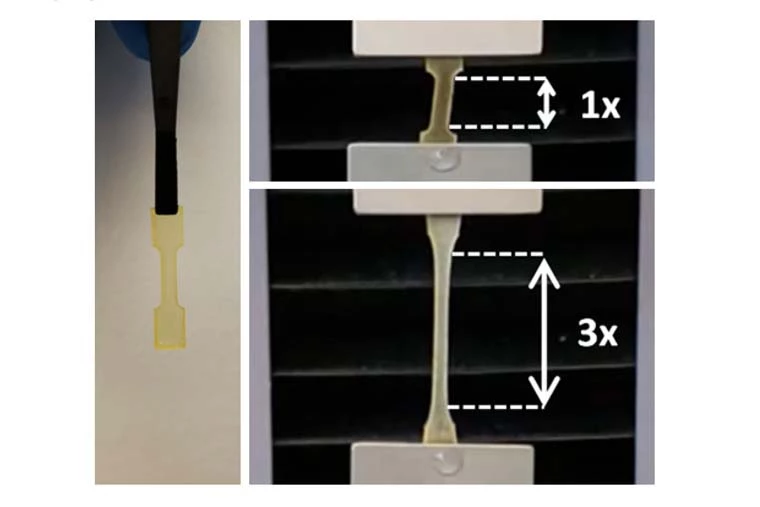Adhesives that hold strong in wet environments are elusive, but could be useful for underwater repairs or healing in the body. Researchers have now developed a new type of adhesive hydrogel that combines the underwater stickiness of mussels with the strength of spider silk.
Mussels are clingy little creatures, secreting specialized proteins that let them strongly stick to surfaces even through the pounding ocean waves. Past research has investigated how to use these mussel foot proteins (Mfps) to make our own adhesives, for use in marine environments or surgical glue. For stability in water, these Mfps are usually embedded in a hydrogel, but that comes with a trade-off of strength in the gel itself.
“Many Mfp-inspired adhesives are weak,” says Eugene Kim, first author of the study. “When you use them to adhere two surfaces underwater, the glue sticks to each of the two surfaces, but breaks apart, akin to separating an Oreo cookie and being left with cream on both sides.”
So for the new study, researchers at Washington University in St. Louis combined this Mfp hydrogel with another bioinspired material. Earlier this year, the team demonstrated a synthetic spider silk that was stronger and tougher than the real thing, so the scientists combined their silk-amyloid proteins from that project with the mussel foot proteins, to create “tri-hybrid proteins.”
“We developed a design principle that allowed us to control both cohesion and adhesion of the hydrogel,” says Fuzhong Zhang, lead author of the study. “The gel is slightly denser than water so you can easily use it underwater, putting it on or between two surfaces.”

The team engineered bacteria to produce the proteins, which allows them to fine-tune each part of the process to achieve the right properties. This way, they can apply it to everything from marine repairs to patching up injuries to various tissues in the body. In particular, the team says it could help for tendon-bone injuries that are hard to fix using sutures.
“Spiders, bacteria, slimy sea creatures, and rotator cuff tears have very little in common,” says Young-Shin Jun, an author of the study. “It is fascinating that the Zhang lab was able to combine the best parts of the first three and to make the new elastic materials with molecular-scale crystalline structures that can serve as a stronger and flexible adhesive. It would be even cooler when we can use it in medical care for repairing shoulder injuries.”
The research was published in the journal ACS Applied Materials and Interfaces.




